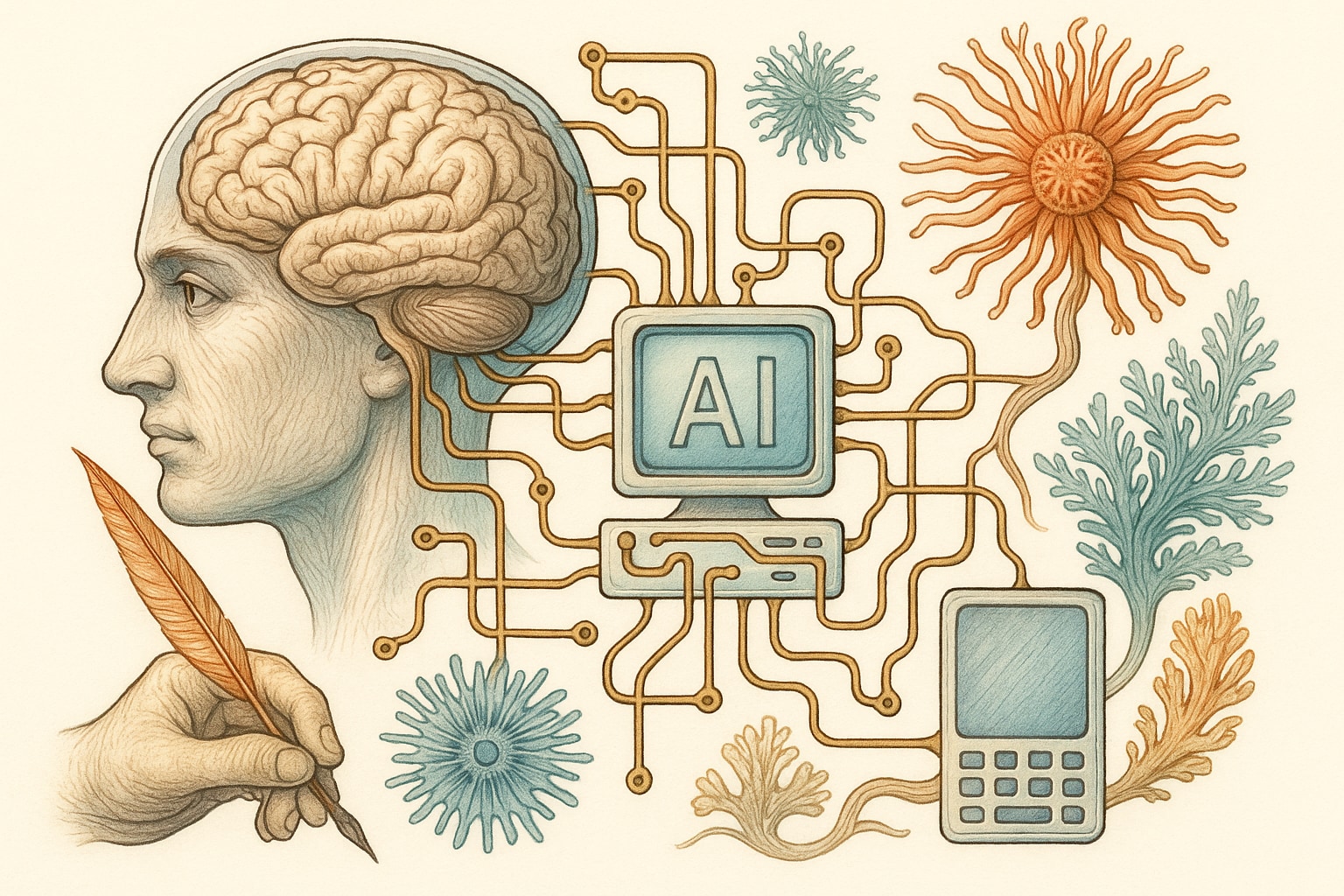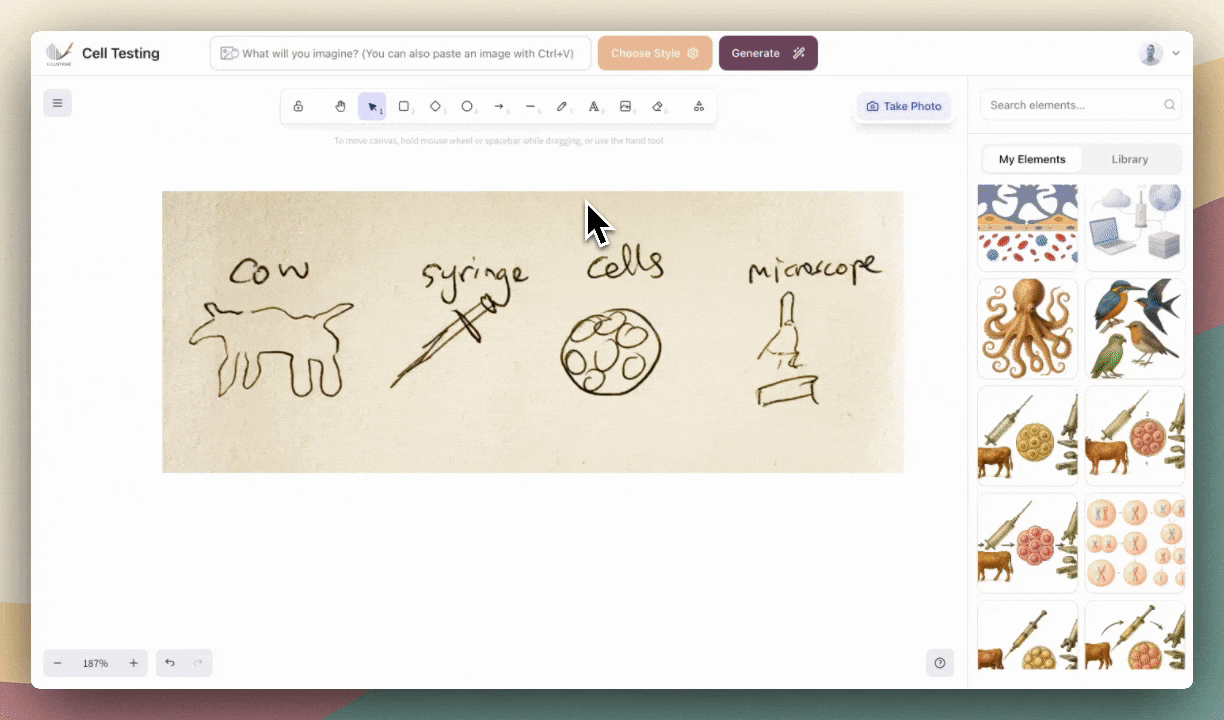AI is making major waves in the academic world, especially when it comes to creating illustrations and visuals for research. With the growing complexity of scientific data and the need to communicate findings clearly, researchers are turning to AI-powered tools to help them craft figures, diagrams, and infographics faster and with greater accuracy. The integration of AI in illustration doesn't just save time—it also opens up creative possibilities that were previously out of reach for many researchers.
There's a growing trend toward the use of AI in education and research. In fact, "In 2024, 86% of students reported using artificial intelligence tools in their schoolwork." And it's not just students: "As of 2024, 76% of researchers routinely use artificial intelligence tools in their research." This widespread adoption is fueling rapid innovation in AI-powered illustration platforms, making it easier than ever for academics to bring their ideas to life visually.
From generating custom images based on text prompts, to editing illustrations on the fly, these tools are revolutionizing the research workflow. As AI tools become more accessible, they're helping level the playing field for researchers at all levels, regardless of artistic background.
Key Features to Look for in AI Illustration Tools
When it comes to choosing an AI illustration tool for academic work, there are a few key features that really make a difference. Not every tool is created equal, so it's important to know what sets the best ones apart. Here are some important capabilities to look out for:
Custom Element Generation: The ability to create unique images or figures from text descriptions, sketches, or even photos. This is especially useful when you need something highly specific to your research topic.
Intuitive Editing Tools: Look for tools with user-friendly interfaces that let you easily add frames, arrows, labels, and adjust elements on an infinite canvas. This flexibility helps with organizing complex diagrams.
AI-Powered Prompt Editing: Some platforms let you modify your images simply by describing the changes you want—think "make the labels blue" or "add more mitochondria." This saves time and enhances creativity.
Export and Integration Options: Being able to export your illustrations in high resolution, and easily embed them in research papers or presentations, is a must for academic work.
Collaboration Features: Tools that allow for real-time collaboration and sharing can be a big plus, especially for team-based projects or multi-author papers.
Accuracy and Scientific Fidelity: The best tools understand the nuances of scientific visuals and help ensure your images are not just attractive, but also accurate and publication-ready.
Before you settle on a platform, consider your workflow and which features will help you communicate your research most effectively. The right AI illustration tool should be an extension of your scientific process, not a roadblock.
Top AI Illustration Tools for Academic Publications
With so many AI illustration platforms hitting the market, it can be tough to know which ones are worth your time. Here’s an overview of four top contenders that are making waves in the academic publishing space.
Illustrae
Illustrae is quickly becoming the go-to platform for scientific illustration, especially for researchers and educators who need accurate, customizable visuals. Its standout feature is the powerful custom element generation tooling—you can just describe the figure you need, and Illustrae's advanced imaging technology creates a tailored illustration in under a minute. Not only can you generate images from text, but you can also use sketches or photos snapped on your phone. The intelligent canvas offers an infinite workspace, intuitive editing tools, and seamless integration for live embeds. Editing is a breeze—just describe your changes in plain language and watch the AI update your figure instantly. With Illustrae, even complex research concepts become visually engaging, making publication-quality illustrations accessible to everyone. To learn more, visit https://illustrae.co.
SciSpace
SciSpace is another popular AI-powered platform focused on helping researchers visualize their data and concepts. It offers a variety of templates for scientific graphs, charts, and diagrams, making it easy to get started even if you don’t have design experience. SciSpace supports AI-powered figure generation and editing, allowing you to tweak visuals with simple prompts. The platform is known for its collaboration tools, enabling multiple users to work on the same project in real time. SciSpace integrates with common academic writing tools, streamlining the workflow from data analysis to figure creation and manuscript submission.
Graph Maker
Graph Maker is geared toward those who need to create publication-ready charts and plots quickly. Using AI, it can interpret your data and generate a variety of graph types, from bar charts to complex scatter plots. The tool emphasizes ease of use, with drag-and-drop functionality and customization options for labels, axes, and color schemes. Graph Maker also supports importing data from spreadsheets or other sources, making it a handy companion for researchers who frequently work with quantitative data. While it may not offer as much flexibility for custom scientific illustrations, it excels at fast, accurate data visualization.
Authorea
Authorea is more than just an AI illustration tool—it’s a collaborative platform for writing, editing, and publishing research papers. It includes built-in tools for generating figures and diagrams, as well as AI-assisted formatting and editing. Authorea’s figure creation features let you add annotations, highlight key findings, and integrate visuals directly into your manuscripts. Designed with research teams in mind, Authorea supports real-time collaboration, version control, and seamless export to various journal formats. While its illustration capabilities are somewhat basic compared to specialized platforms, its all-in-one workflow can be a game-changer for multi-author projects.
Benefits of Using AI Illustration Tools in Research
AI illustration tools are making a huge impact on the way researchers communicate their work. For starters, they save a ton of time—what used to take hours or even days can now be accomplished in minutes. This means more time for actual research and analysis. The ability to generate custom visuals on demand also boosts creativity, allowing researchers to experiment with different layouts and styles until they find the perfect fit for their data.
Another big advantage is accessibility. With AI, you don’t need to be a professional designer or have access to expensive software to create publication-quality figures. These tools level the playing field, giving every researcher the ability to present their findings clearly and effectively. Plus, they help ensure consistency and accuracy across all your visuals, which is crucial for scientific credibility. "In 2024, 73.6% of students and researchers reported using AI tools for research purposes."
Finally, as AI becomes more integrated into academic workflows, it’s driving greater collaboration and innovation in research communication.
Challenges and Considerations
Despite the many benefits, there are a few challenges to keep in mind when using AI illustration tools. First, while AI is great at generating visuals quickly, it can sometimes miss subtle scientific details or nuances, so it’s always important to double-check your figures for accuracy. Another consideration is data privacy—make sure any sensitive research data is handled securely by the platform you choose.
There’s also a learning curve with any new tool. While most AI illustration platforms are designed to be user-friendly, it can still take some time to get comfortable with their features and workflows. Additionally, if your work requires highly specialized or niche illustrations, you may need to do some manual editing or customization beyond what the AI can provide.
Lastly, as more researchers adopt these tools, staying up to date with the latest advancements and best practices will help you get the most out of your investment. "By 2025, the AI in education market is projected to reach $7.77 billion, growing at a compound annual growth rate of 39.6% between 2024 and 2028." This explosive growth means new features and platforms are popping up all the time, so keep an eye out for updates that could benefit your workflow.
Conclusion
AI-powered illustration tools are redefining how researchers and educators create and share scientific visuals. Whether you’re looking for quick, custom figures or need a collaborative platform for multi-author papers, there’s an AI tool out there to fit your needs. As adoption continues to rise and the technology advances, these platforms will only become more powerful and user-friendly. "By 2027, the global AI in education market is projected to reach $25 billion." If you want your research to stand out, now is the perfect time to explore what AI illustration tools like Illustrae and others have to offer.


